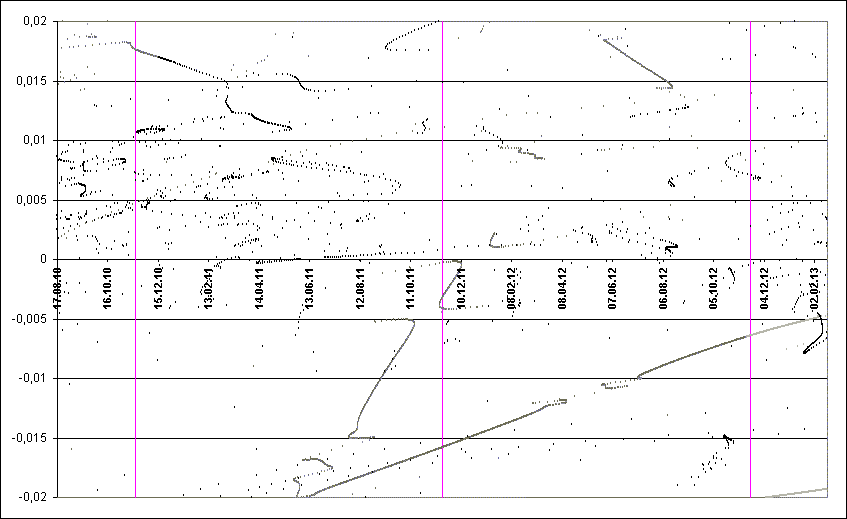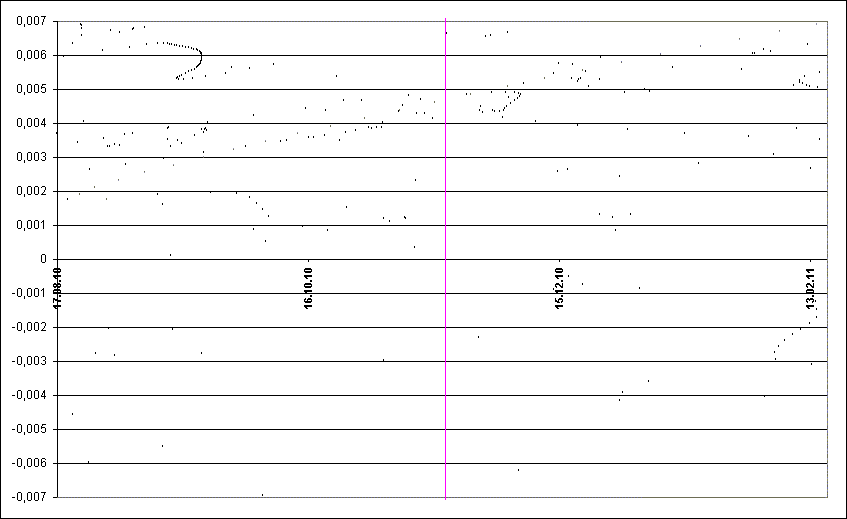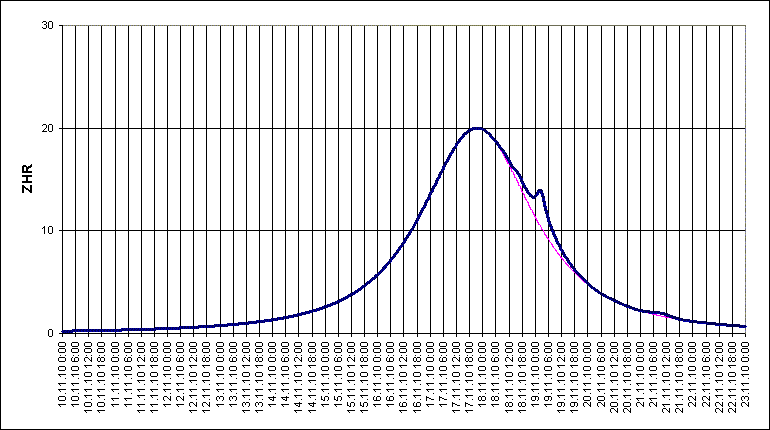Leonids 2010: prediction of activity
to the list of predictions

Fig. 1. Space-temporal projection of Leonids trails parts onto their minimal distance passages dirung the period (correspondence between colours of the particles and their ejection velocities can be seen here).

Fig. 2. Detailed space-temporal projection of Leonids trails parts onto their minimal distance passages in 2010 (correspondence between colours of the particles and their ejection velocities can be seen here).

Fig. 3. Assumed profile of overall Leonid activity (blue line) and its background component (red line).
In the 2010 the Leonids are expected to produce the background maximum, which, by IMO's data, should occur on 17 November at 21:15 UT. Maximum ZHR is expected by IMO to be around 20, which coincides with the Author's expectations.
Significant encounters with 55P trails are not found, so the background Leonid maximum will most probably the single one in 2010, though still quite prominent comparing to other "usual" Leonid returns. As shown on the Fig 3, the sole more or less notable deflection from the red line reflecting background activity expectations is located within several hours around 2-3 UT on 19 November (formal peak time - 2:12 UT on 19 November). It is caused mainly by particles of perturbed and thin 1234 trail. Its own computed ZHRmax is only 3-4, so far, considering falling background activity this trail is not expected to form a separate activity peak, but will only be able to keep the activity at ZHR~14 during several hours. Nevetheless, considering that intensity predictions could be understated, this period of time is perhaps the most interesting to watch for any unexpected Leonid activity behaviour.
References
1. "Comet's dust 2.0" program by S. Shanov and S. Dubrovsky. [Used for orbital computations.]
2. Lyytinen E, van Flandern T. "Predicting the strength of Leonid outbursts", 2000, Icarus, P. 158-160.
3. Jenniskens P. Meteor showers and their parent comets, 2006, 780 p. 4. Kasuo Kinoshita, http://jcometobs.web.fc2.com/ [Orbital elements of the comet 55P Tempel-Tuttle]